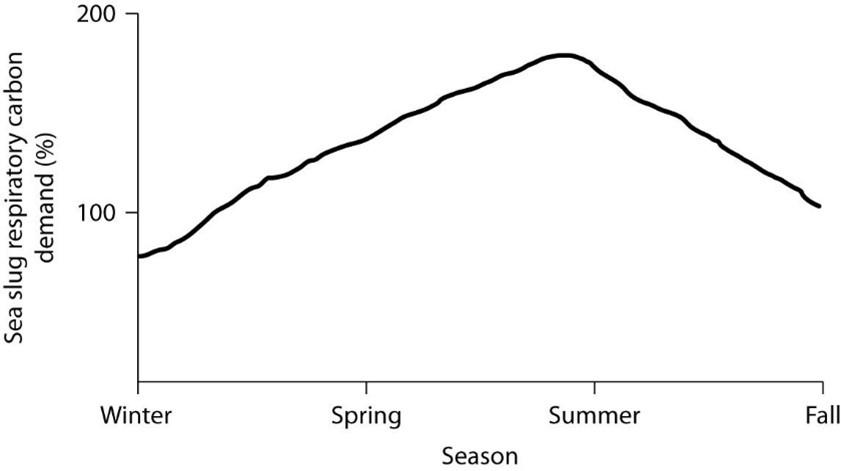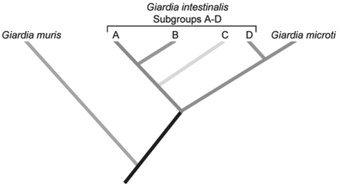
Fig. 1 Percent of sea slug respiratory carbon demand provided by symbiotic dinoflagellates
1) All of the following statements concerning protists are true EXCEPT (assume the 5 kingdom system of classification).
A) All apicomplexans (sporozoans) are parasitic.
B) Protozoologists agree that there are 7 phyla of protozoa.
C) Ciliates can be freeliving or symbiotic.
D) The organism that causes malaria is transmitted to humans by the bite of the female Anopheles mosquito.
E) All Protista are unicellular eukaryotic organisms.
2) Which of these illustrates the correct representation of the binomial scientific name for the organism that causes PAM?
A) Nagleria fowleri
B) Nagleria fowleri
C) nagleria fowleri
D) Nagleria Fowleri
E) Nagleria Fowleri
3) You are given an unknown organism to identify. It is unicellular and heterotrophic. It is motile, with well-developed organelles and three nuclei, one large and two small. You conclude that this organism is most likely to be a member of which phylum?
A) Ciliophora
B) Sarcomastogophora
C) Apicomplexa
D) Arthropoda
E) Kinetoplastida

Fig. 1 Percent of sea slug respiratory carbon demand provided by symbiotic dinoflagellates
4) According to the graph above, during which season(s) of the year is the relationship between the sea slug and its dinoflagellates closest to being commensalistic (as opposed to mutualistic)?
A) spring B) summer C) fall D) spring and fall E) winter
Match the disease symptoms (questions 5-10) with the correct organism.
A. Leishmania tropica
B. Trypanosoma cruzi
C. Plasmodium malariae
D. Trichomonas vaginalis
E. Giardia lamblia
5) heart aneurysm
6) recrudescence
7) disfiguration
8) chafing burning sensation
9) malabsorption of water
10) flu-like symptoms
11) Which of the following organisms has an undulating membrane?
I. Giardia
II. Trypanosoma
III. Eimeria
IV. Trichomonas
V. Cryposporidium
A) I only
B) IV and V
C) II and IV
D) II only
E) II, IV, and V
12) The genus Gregarina is part of the
A) Sarcodina B) Phytomastigophora C) Apicomplexa D) Ciliophora
13) The vector for African Sleeping Sickness is
A) kissing bug (Triatoma)
B) sand fly (Phlebotomus snd Lutzomyia)
C) tsetse fly (Glossina)
D) mosquito (Anopheles)
E) tick (Ixodes)
14) Entamoeba histolytica is normally found in the
A) large intestine
B) small intestine
C) blood stream
D) bile duct
E) cornea of the eye
15) A number of parasites (eg, toxo; crypto) which were formerly considered inconsequential, have become life-threatening in patients with
A) whooping cough.
B) nagana.
C) HIV/AIDS.
D) coccidiosis.
E) malaria.
16) The source of human infection for toxoplasmosis is
A) congenital.
B) poorly cooked or raw meat.
C) oocysts from cat feces.
D) all of the above.
17) Plasmodium requires two types of hosts to complete its life cycle. One is an vertebrate and the other is a (an)
A) arthropod. B) cnidarian. C) protozoan. D) annelid. E) pig.
Match questions 18-22 with the following processes
A. gametogony
B. schizogony only
C. sporogony only
D. schizogony and gametogony
E. gametogony and sporogony
18) process(s) producing merozoites
19) Toxoplasma gondii in humans
20) T. gondii in the litter box
21) process(s) producing sporozoites
22) Plasmodium RBC cycle
23) Parasites, such as trypanosomes, can change their identity before our immune system can build up substantial antibodies. How could cells change their "chemical identity" on a regular basis?
A) Rapid evolution can produce continuous mutations.
B) A new phospholipid bilayer is generated to replace the old layer.
C) Because the cell membrane is "set", the cell must reproduce with variation and then any cells with the old membrane die.
D) Cells eliminate all surface proteins in order to present a naked lipid bilayer free of unique molecules.
E) Different glycolipids and glycoproteins are produced internally, transported by vesicles, and moved into the plasma membrane.
24) When a mosquito infected with Plasmodium first bites a human
A) the Plasmodium cells cause lysing of the human red blood cells.
B) the Plasmodium cells infect the human liver cells.
C) the Plasmodium gametes fuse, forming an oocyst.
D) the Plasmodium oocyst undergoes meiosis.
E) the Plasmodium sporozites differentiate into gametocytes.
25) Which statement regarding resistance is false?
A) Many of the mosquitoes that transmit malaria to humans have become resistant to pesticides.
B) Many humans have become resistant to antimalarial drugs.
C) Trichomonas vaginalis is resistant to the normal acidity of the human vagina.
D) Many of the malarial parasites have become resistant to antimalarial drugs.
26) All of the following are common causes of opportunitistic infections in HIV/AIDS patients except
A) Entamoeba histolytica.
B) Toxoplasma gondii.
C) Pneumocystis.
D) Cryptosporidium.
E) Isospora belli.
27) Three US oil prospectors assisted in the surveying a potentially productive oil field in the rainforests of Brazil. One month after returning to the U.S., two of the men developed lesions on their faces, arms and necks that progressively increased in size and began to ulcerate. The men also experienced mild fever, weight loss and reduced appetites. A Giemsa stain of pus taken from the lesions showed white cells and macrophages. The history of the individuals and description of the intracellular structures observed in infected white cells are consistent with a preliminary diagnosis of
A) malaria. B) leishmaniasis. C) giardiasis. D) sleeping sickness.
Use the following information to answer the next question.
Giardia intestinalis can cause disease in several different mammalian species, including humans. Giardia organisms (G. intestinalis) that infect humans are similar morphologically to those that infect other mammals; thus they have been considered a single species, though other species in this genus infect other organisms. However, G. intestinalis has been divided into different subgroups based on their host and a few other characteristics.
In 1999, a DNA sequence comparison study tested the hypothesis that these subgroups actually constitute different species. The following phylogenetic tree was constructed from the sequence comparison of rRNA from several subgroups of G. intestinalis and a few other morphologically distinct species of Giardia. The researchers concluded that the subgroups of Giardia are sufficiently different from one another genetically that they could be considered different species. (T. Monis et al. 1999. Molecular systematics of the parasitic protozoan Giardia intestinalis. Mol. Biol. Evol. 16[9]:1135–44.)

Fig. 2
28) According to the phylogenetic tree in the figure above, Giardia intestinalis constitutes a _____ group.
A) paraphyletic B) monophyletic C) polyphyletic
29) All of the following are associated with Plasmodium falciparum infections except
A) all ages of erythrocytes can be infected.
B) relapses can occur up to 40 years after the initial infection.
C) severe, rapidly fulminant anemia and cerebral malaria are common clinical manifestations.
D) ring form trophozoites are diagnostic of infection with this speces of Plasmodium.
30) In his book Evolution of Infectious Diseases (New York: Oxford University Press, 1994), Paul Ewald theorizes that parasites that are NOT transmitted by insect vectors are generally less virulent in the final host than are parasites that ARE transmitted by insect vectors. Speculate on the biological basis for this generalization.
Answers:
1) B
2) B
3) A
4) E
5) B
6) C
7) A
8) D
9) E
10) C
11) C
12) C
13) C
14) A
15) C
16) D
17) A
18) B
19) B
20) C
21) C
22) D
23) E
24) B
25) B
26) A
27) B
28) A
29) B
30) Virulence weakens or kills the host, so it would be expected that through natural selection, parasites would limit their virulence if the host is the only means of transmission to new hosts. Virulence in parasites that are transmitted by insects, however, would not be selected against. Instead, they would be selected for maximal reproduction, which usually leads to virulence.